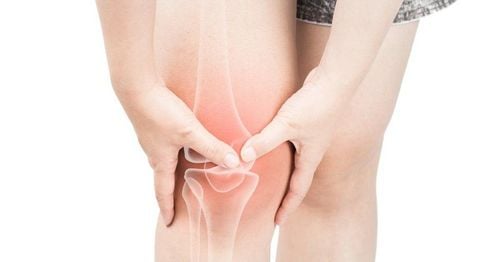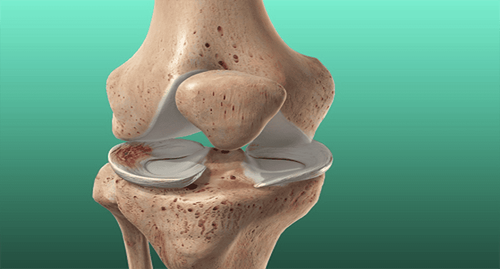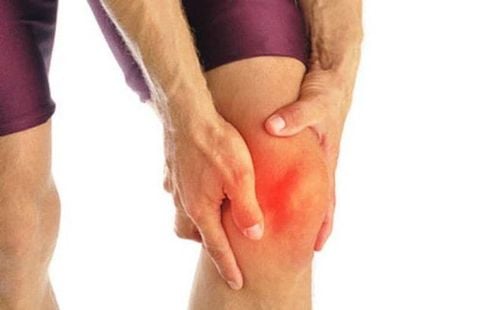This is an automatically translated article.
In addition to the clinical symptoms, the doctor will use the Macmurray and Appley tests, if these tests are positive, it may be a sign of a meniscus tear in the knee joint. In addition, the doctor may ask the patient to do some imaging tests such as X-ray of the knee, MRI scan, arthroscopy, ... to confirm the tear of the meniscus of the knee joint.
1. Causes of knee meniscus tear
The meniscus of the knee joint has a semicircular shape, located between the tibia and femur. The main job of the meniscus of the knee joint is to protect the articular cartilage of the tibia and femur, and at the same time absorb, shock, and evenly distribute the force on the knee, thereby creating stability for the knee joint. In addition, the meniscus of the knee joint also spreads lubricant and nutrients to nourish the joint cartilage; Fill the knee joint space to avoid the joint capsule and synovial membrane getting stuck in the joint.
The average thickness of the knee meniscus is about 3-5mm and the meniscus structure is as follows:
Inner meniscus: This is the cartilage located inside the knee joint, C-shaped, about 5-6cm in length. External meniscus: This is the cartilage that lies on the outside of the knee joint, and is shaped like an O. A meniscus tear is a knee injury. This condition is common when a sudden turn of the knee during exercise, sports or an accident causes the meniscus to tear or rupture. There are some cases where the knee cartilage is torn or broken and will get stuck in the knee joint, causing knee osteoarthritis.
The morphology of meniscus tears varies, and can be horizontal or vertical tears, spokes, flaps or other complex shapes. At the beginning of the knee meniscus injury, the patient can still play sports, exercise and do normal activities. However, after 2-3 days, the pain due to meniscus tear will appear, the patient may have signs and symptoms such as:
After the meniscus is torn, the patient can hear a sound. "explode"; Occurrence of symptoms of knee pain and swelling and difficulty in flexing and stretching the knee joint due to a stuck knee joint; When the patient moves, there is a clicking sound coming from the knee joint; After that, the condition will get worse, causing the patient to have pain when pressing on the knee joint, making daily activities more difficult; For elderly patients, when the meniscus tear occurs, they may not know it, sometimes only feel pain in the knee while squatting, so the pain and slight swelling of the knee joint is the only symptom to recognize the tear. meniscus of the knee joint in the elderly. If the meniscus tear is small, there is mild pain and swelling in the knee joint, the symptoms usually last from 2-3 weeks. Therefore, as soon as the above symptoms are noticed, the patient should immediately go to a reputable medical facility to be examined and accurately diagnosed by a doctor, thereby having the most appropriate treatment method, limiting complications. dangerous disease.
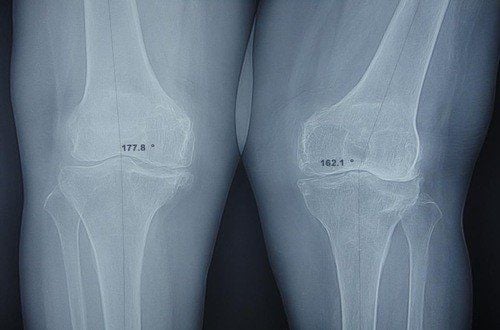
Chụp X quang quy ước thường không đóng vai trò quan trọng trong việc đánh giá sụn chêm bình thường
2. Knee meniscus tear is diagnosed by what medical technique?
In addition to the above clinical symptoms, the doctor will use the Mac Murray and Appley test, if these tests are positive, it may be a sign of a meniscus tear in the knee joint. In addition, the doctor may ask the patient to do some imaging tests to confirm a meniscus tear, these tests include:
Knee X-ray Conventional X-rays usually don't. play an important role in the assessment of normal meniscus. However, calcium deposits in the meniscus of the knee joint can only be seen on X-rays. But if radiographs are normal and taken in an upright position, this is an important technique in assessing the joint axis. In addition, this imaging technique can also help doctors evaluate the joint axis before surgery. Some other abnormalities suggestive of meniscus damage seen on radiographs are total degeneration of the tibialis femoral joint and stenosis of the joint space.
Single contrast arthroplasty In the absence of CT or MRI, single or dual contrast arthroplasty can be used to describe the meniscus surface and detect a meniscus tear.
Magnetic resonance imaging (MRI) The MRI technique of the knee joint will help the doctor see the ligaments and cartilage in the knee, thereby determining whether the meniscus is torn. However, the accuracy of this imaging technique is only about 77%. Because some cases of meniscus tear may not show up on MRI because it closely resembles aging and degenerative changes. In addition, the structure around the knee is similar to that of a meniscus tear, so it is often difficult for doctors to make a specific diagnosis.
Ultrasound of the knee joint An ultrasound technique to assist doctors in identifying loose cartilage conditions in the patient's knee. From there, diagnose knee meniscus tear or not.
Arthroscopy Arthroscopy can assist doctors in determining the cause of a patient's knee pain. In addition, this technique can be prescribed by the doctor in combination with surgery.
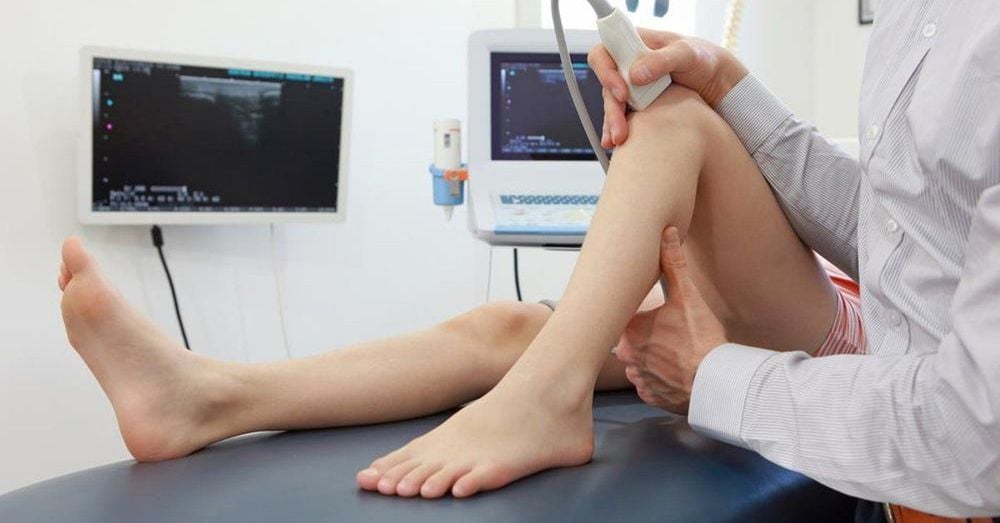
Kỹ thuật siêu âm nhằm hỗ trợ bác sĩ xác định các tình trạng sụn lỏng trong đầu gối người bệnh
3. Treatment of knee meniscus tear
There are many treatments for meniscus tears. However, the choice of treatment method will depend on the location, morphology and size of the meniscal lesion. For example, in the case of a torn meniscus in the lateral third, a small tear can heal on its own, but a large tear requires conservative suture endoscopically. Besides, the treatment of meniscus damage also depends on other factors such as activity level, age of the patient. Specific treatment methods are as follows:
Conservative knee meniscus tear treatment:
If the patient has a small tear at the peripheral border, there is no pain in the knee and the knee is still stable, then there is no need to use surgery. . Instead, immediately after the injury, the patient should apply ice, bandage the knee and minimize movement. It is best for the patient to be immobile and rest in place, and at the same time take edema-reducing drugs, non-steroidal anti-inflammatory pain relievers as prescribed by the doctor. Treatment of knee meniscus tear by surgery:
Method of cutting the entire meniscus: This technique is rarely used. The meniscus was completely cut up to the joint capsule through knee arthroscopy. Partial meniscalectomy: This laparoscopic surgery is often indicated when meniscus tears in the avascular area. Endoscopic meniscal suture: The meniscal suture method is usually indicated when the meniscus tear is located in the rich vascular area, where it is adjacent to the joint capsule; The longitudinal tear is about 2cm long and the lesion is not more than 8 weeks old. Rehabilitation after knee meniscus tear surgery:
After knee meniscus tear surgery, immobilize the torn meniscus of the knee with a brace for about 3 weeks to heal the meniscus. At the same time, combine early exercise to regain joint amplitude as well as prevent muscle atrophy. Currently, Vinmec International Hospital has implemented the treatment of meniscus tears with platelet-rich plasma. Accordingly, the option of treating meniscus tears with PRP at Vinmec is a smart choice for the patient because the medical staff of the Vinmec system are well trained in the technique of using platelet-rich plasma, oranges and platelets. results without errors. At the same time, equipment used to treat meniscus injuries are sterile and used only once, ensuring maximum safety for the patient. The PRP preparation process at Vinmec is carried out under strict supervision in a laboratory of international standards.
In addition to treating meniscus tears, PRP is also used to treat other injuries such as: tendinitis, tendon diseases, rotator cuff tears/inflammation, ligament damage, muscle tears, joint problems, slow recovery from fractures, surgical procedures for tendon reconstruction, ligament reconstruction, wound reconstruction after surgery or trauma.
Therapy using autologous platelet-rich plasma (PRP) to treat meniscus tear is only applied at a few large hospitals such as Vinmec. The reason is that this method has a complicated implementation process, requires highly qualified doctors and modern machinery systems. Therefore, if customers want to use PRP therapy, customers can come to Vinmec for consultation, examination and thorough treatment.
Please dial HOTLINE for more information or register for an appointment HERE. Download MyVinmec app to make appointments faster and to manage your bookings easily.




